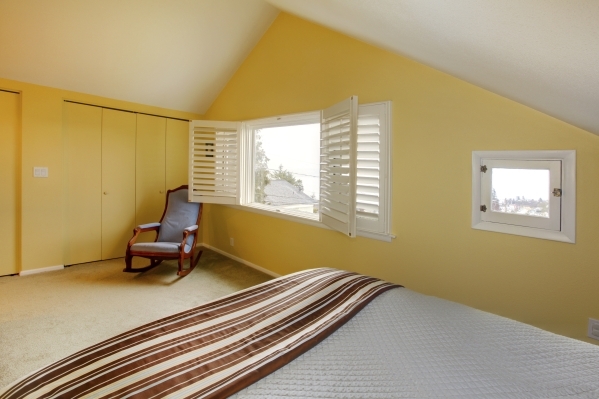Area jurisdictions have different rules for renting out guest home
They are called many different names. Granny flats, mother-in-law suites, backyard cottages, casitas, carriage flats, sidekick houses or laneway houses; these are terms used to describe what are officially called accessory dwelling units.
Accessory units are those private living quarters residing on single-family residential properties. They have their own kitchen, bathing, living, dining and sleeping components and entrances. Typically these units are in back of the main home and range from about 300 to 1,500 square feet.
"Builders are still building new homes with detached separate dwellings on the same parcel," said Jim Brooks, CEO and owner of The Brooks Team and Realtor with Realty One Group. "About 90 percent of these separate dwellings being built new are called casitas. Casitas have been fairly popular for builders to include when building new and have been for at least the past 15 to 20 years if not longer."
If considering constructing a new dwelling on your property, a special use permit must be approved and purchased. For example, in the Las Vegas, the permit application costs $1,030, which includes a $500 application fee, $500 notification fee and a $30 recording fee.
"The application would then go through the public hearing process before the Planning Commission and City Council for final disposition," said Jace Radke Senior, public information officer for the city of Las Vegas.
The terms of renting or leasing accessory dwelling units must exceed a 30-day agreement. The property owner must reside in the primary residence if the unit is rented or leased to another party in all jurisdictions, except for the city of Henderson, with occupancy restrictions.
"The occupancy is limited to no more than four unrelated people in a dwelling," Dan Kulin, Clark County public information officer said.
According to Scott Majewski, principal planner for the city of Henderson, if the owner of the primary property chooses to rent out the unit, they must comply with the city's broad definition of family if renting to more than one individual.
Though some regulations are similar, area jurisdictions view these dwellings differently with regulation in the zoning and size requirements.
"It's important to know where you live," Tim R. Szymanski, fire public education and information officer for the city of Las Vegas said. "There are county islands that are not annexed into the city."
Szymanski said he's had cases where residents believed they were living in the city but found out they were actually living in the county jurisdiction.
The city of Las Vegas limits these units to specific residential zoning districts including Undeveloped, Residence Estates, Single Family Residential-Restricted and Single Family Residential, and requires the approval of a special use permit prior to establishing the use.
"The minimum lot size required for this type of structure is 6,500 square feet," Radke said. "Unless the principal dwelling unit is owner-occupied, an accessory structure (Class I) may not be offered or occupied as a rental unit."
According to Kulin, the county allows the units in all zoning districts except high-density, multifamily residential. In the rural residential districts, the total area can't exceed 1,500 square feet unless a special use permit is approved to increase the size.
In non-rural county residential districts, the total area can't exceed 1,000 square feet or 40 percent of the principal dwelling's area not including garages, overhangs, patio covers, or similar structures, whichever is less. No size increase is permitted.
The city of Henderson allows conditional use for the dwellings in four low-density, single-family residential zones. Accessory units cannot exceed 25 percent of the square footage of the main single-family home, excluding carports, garages and unfinished basements, with a maximum size of 1,000 square feet.
"In the RS-6 zoning district, the minimum lot size must be 10,000 square feet," Majewski said. "The other zoning districts the lot size is already a minimum 10,000 square feet or greater."
In all three jurisdictions, only one accessory dwelling is permitted on a property and has to be no closer than 6 feet to the main residence. Other setbacks from the outlying property lines differ depending on the zoning district.
"Generally speaking the set back range is 5 to 40 feet," Kulin said.
Typically the utilities for the dwellings are connected with the main residence.
"From my experience most separate dwellings will still run on the main home's utilities," Brooks said. "I have seen owners install additional utility meters for the separate dwellings to keep the utilities separate from the main home."























